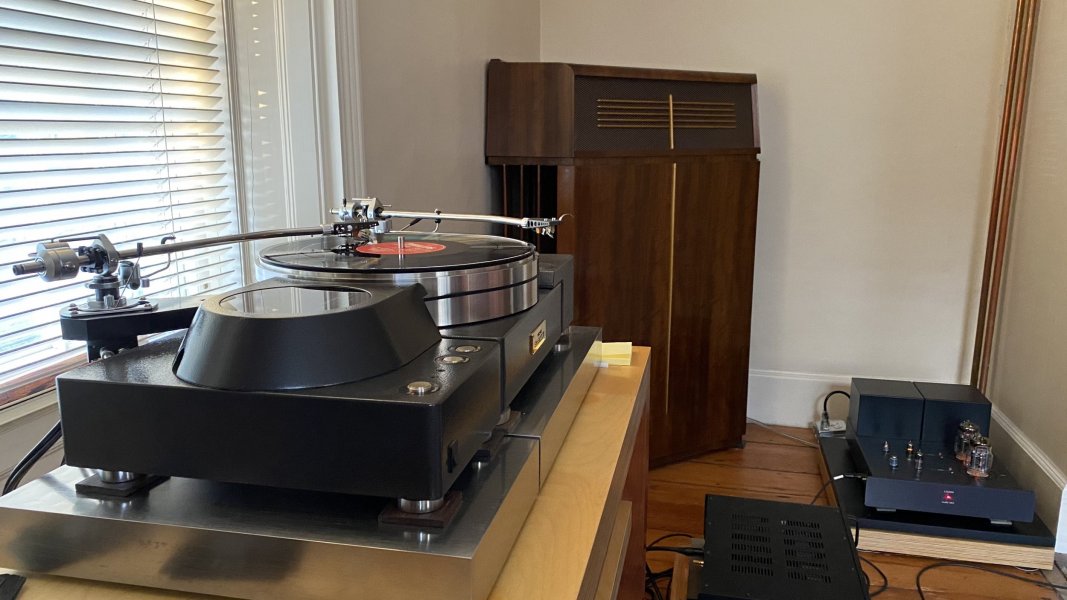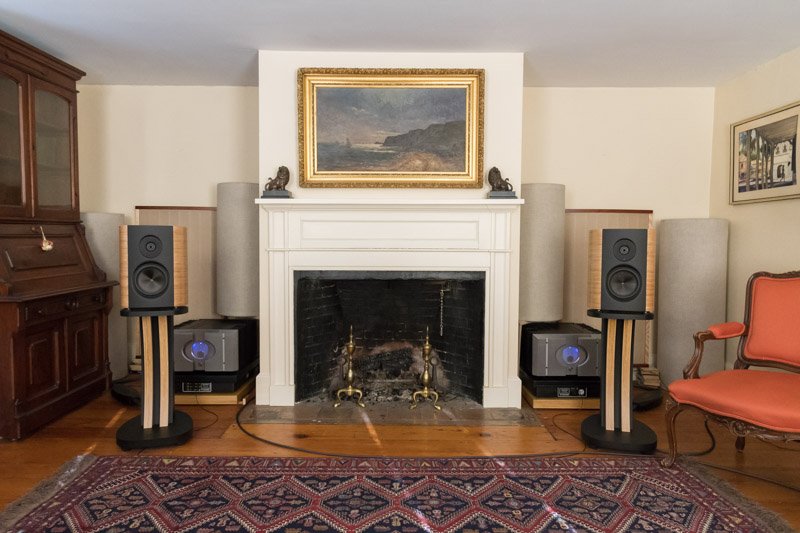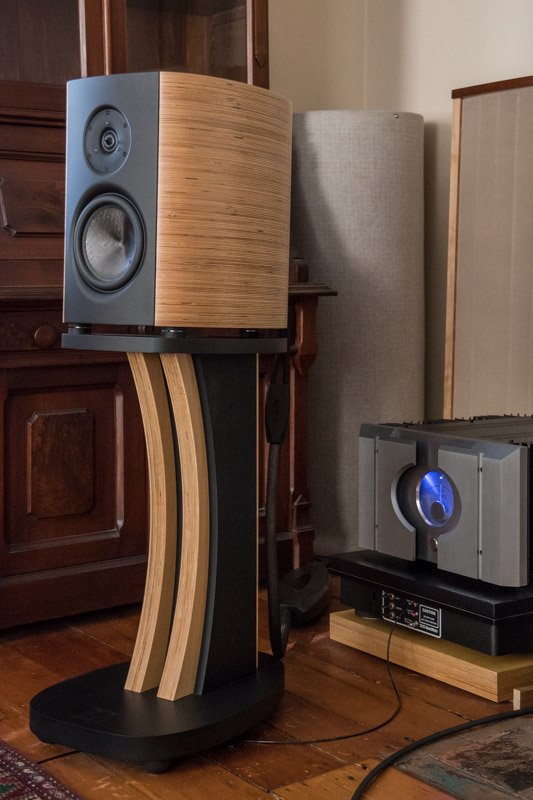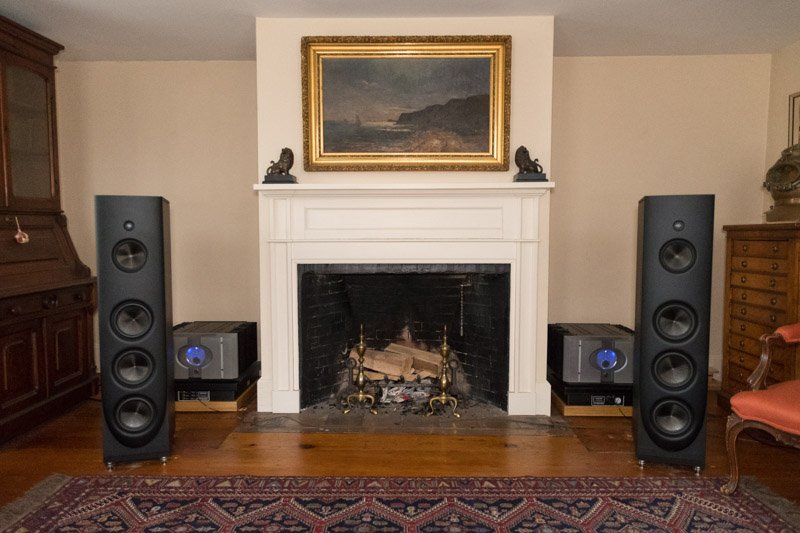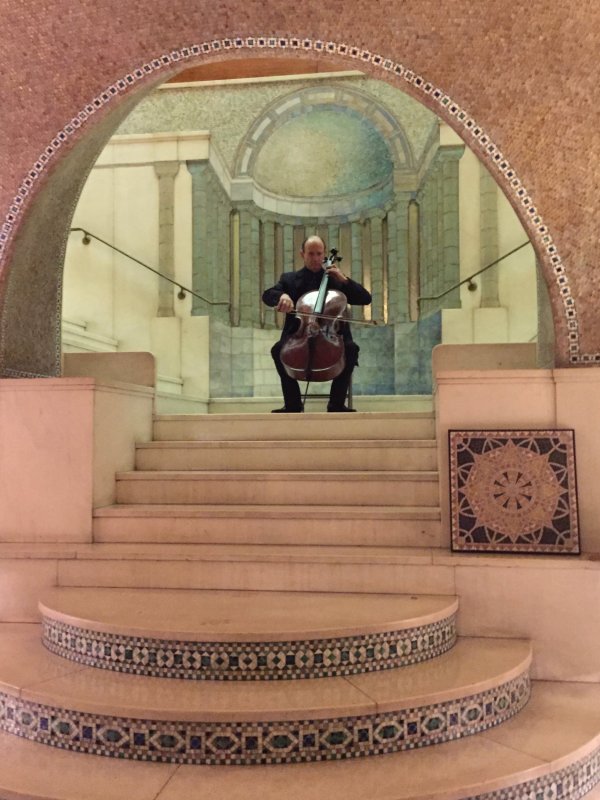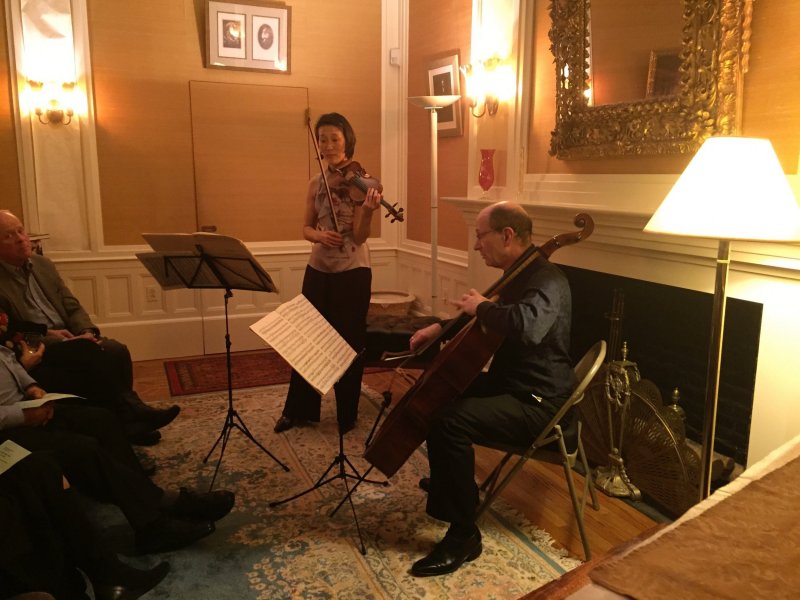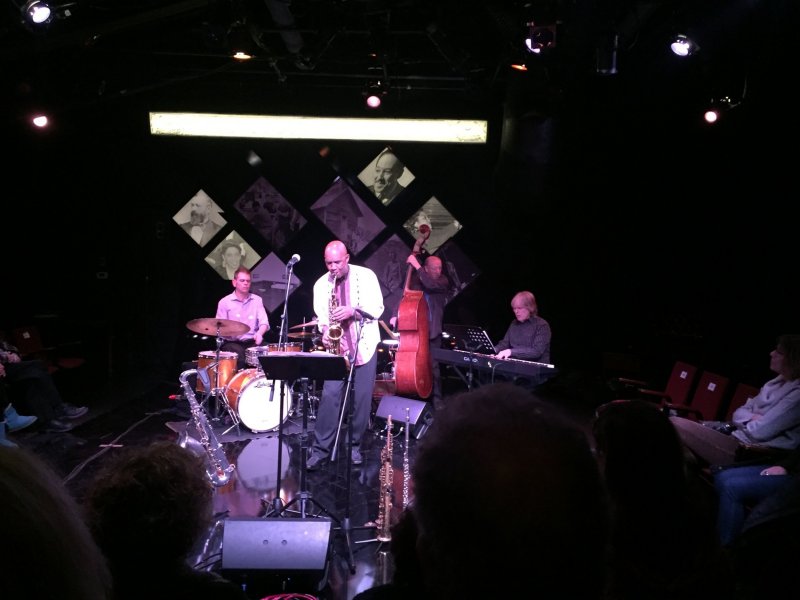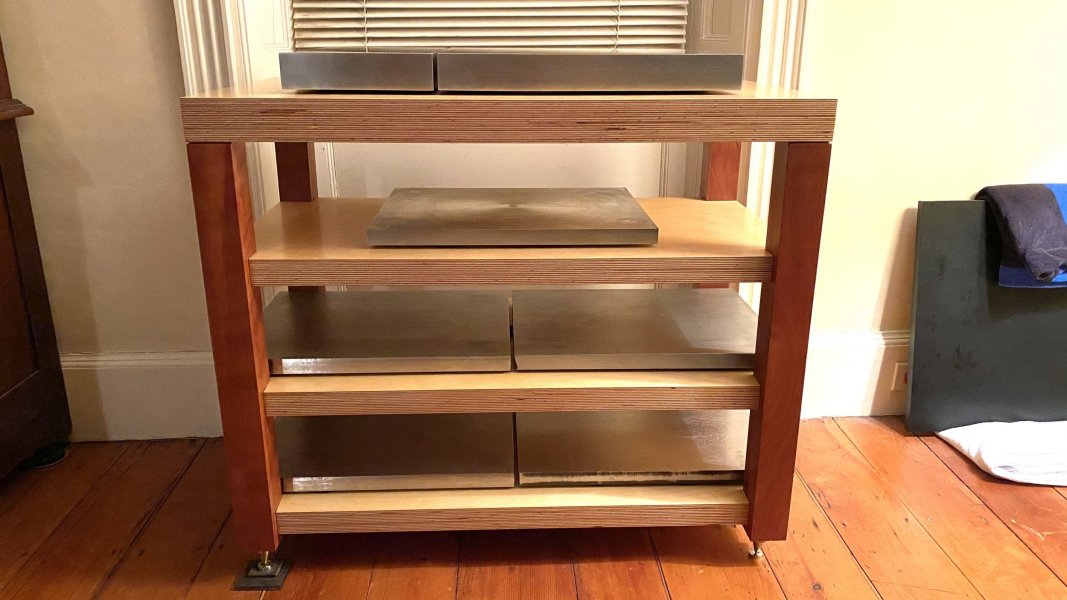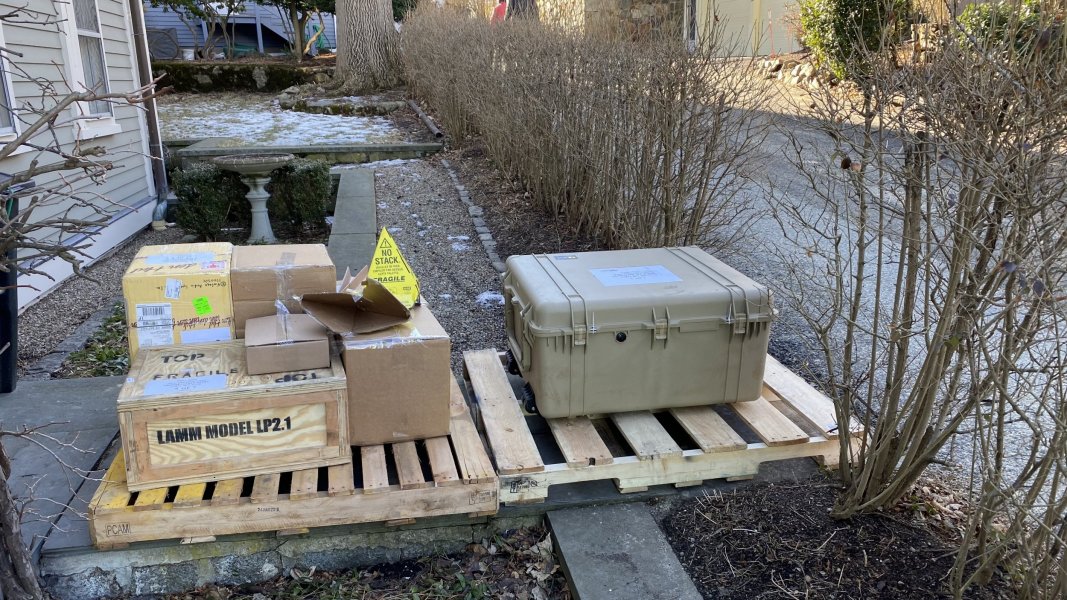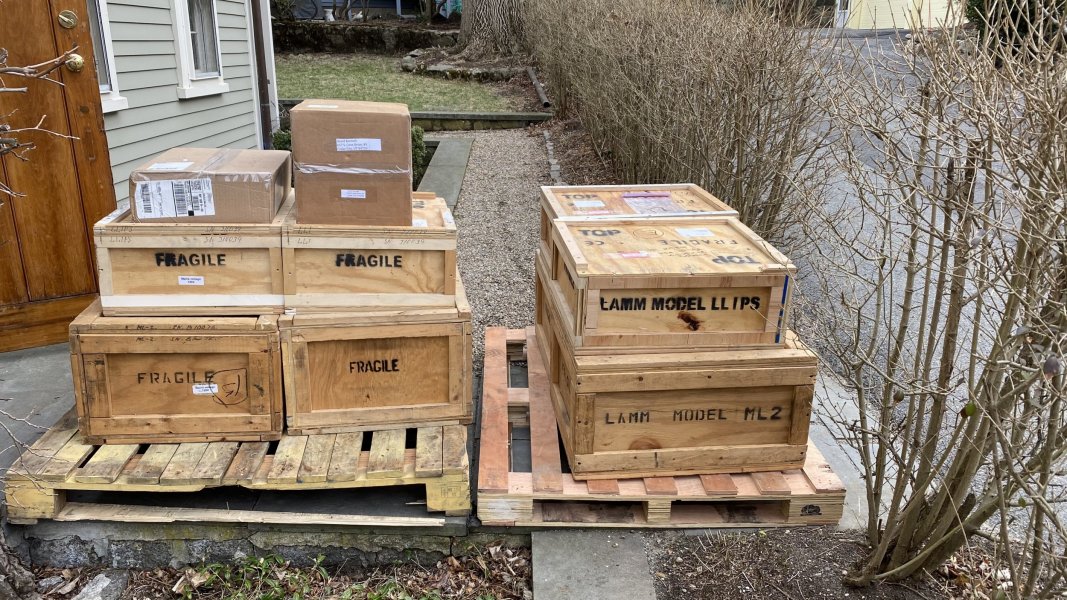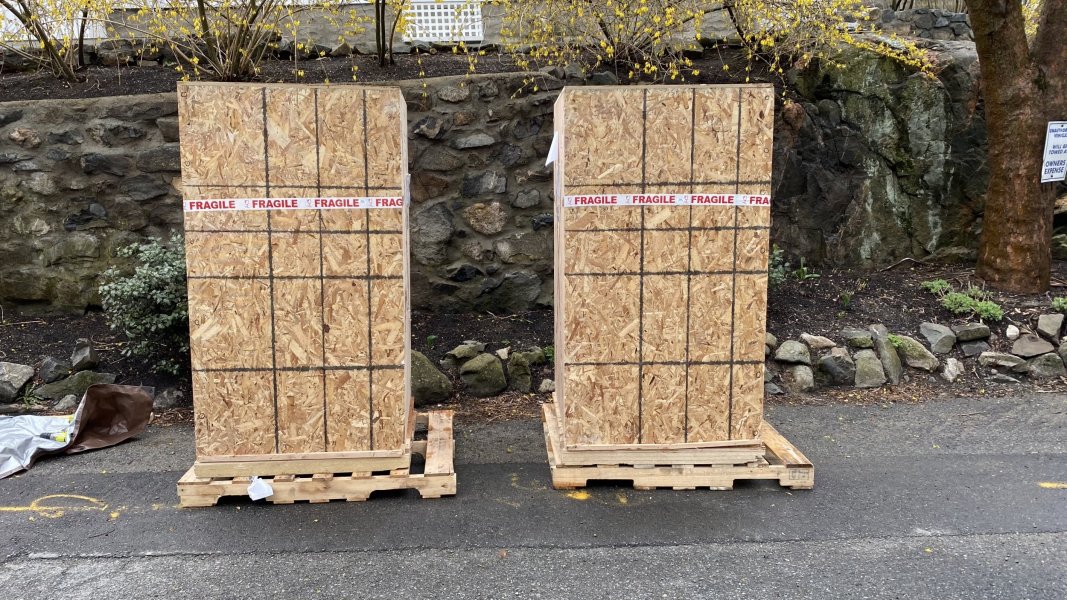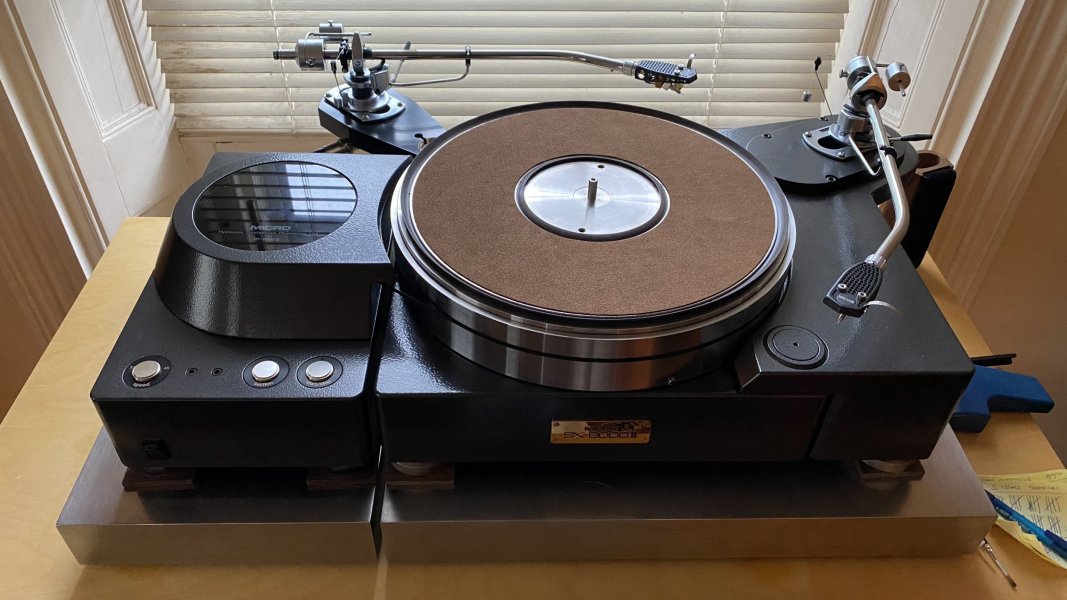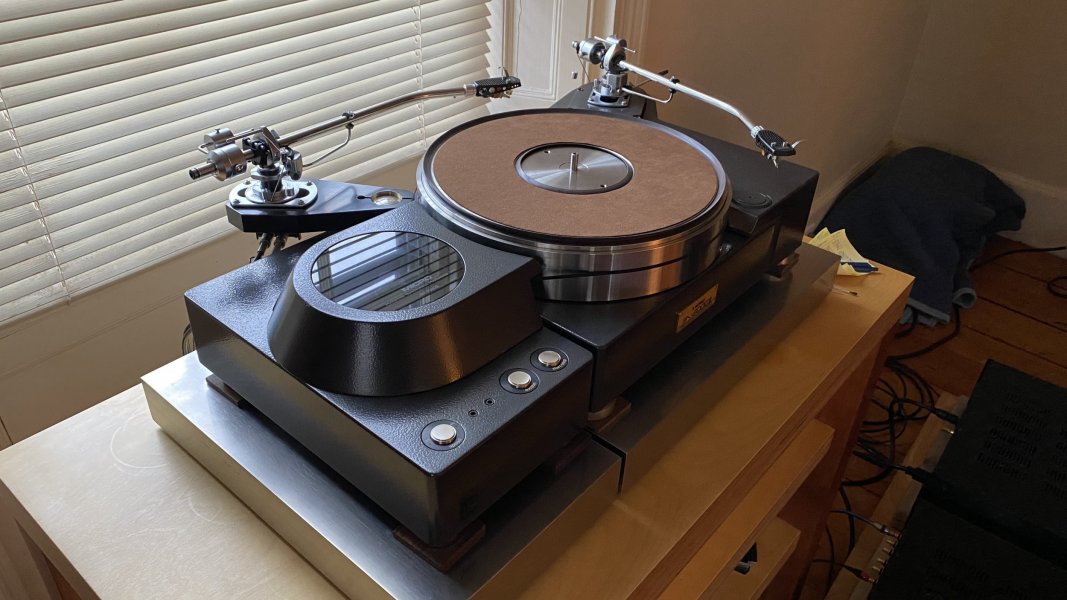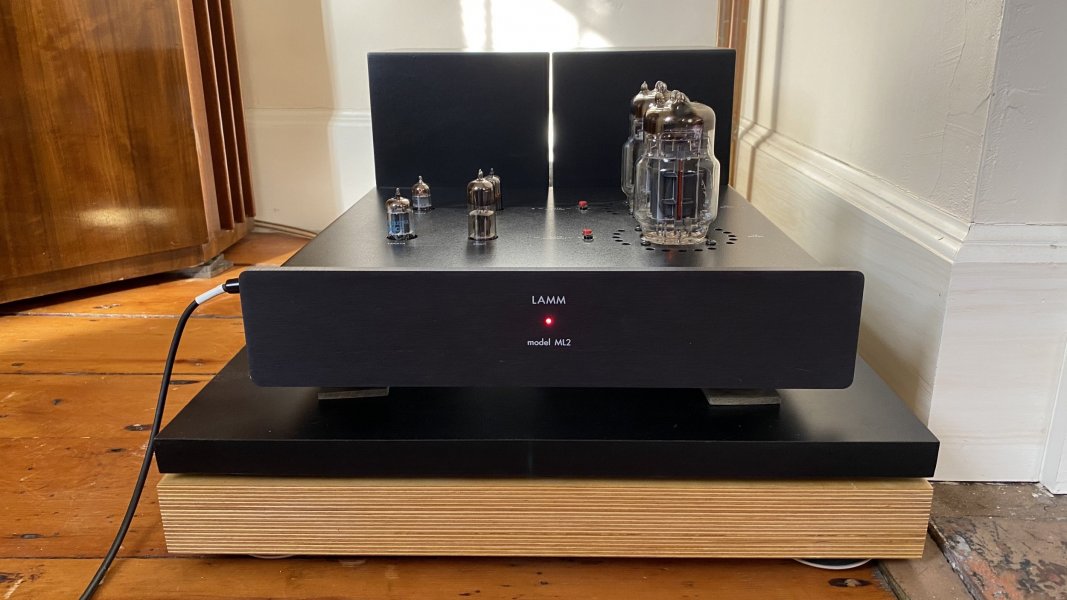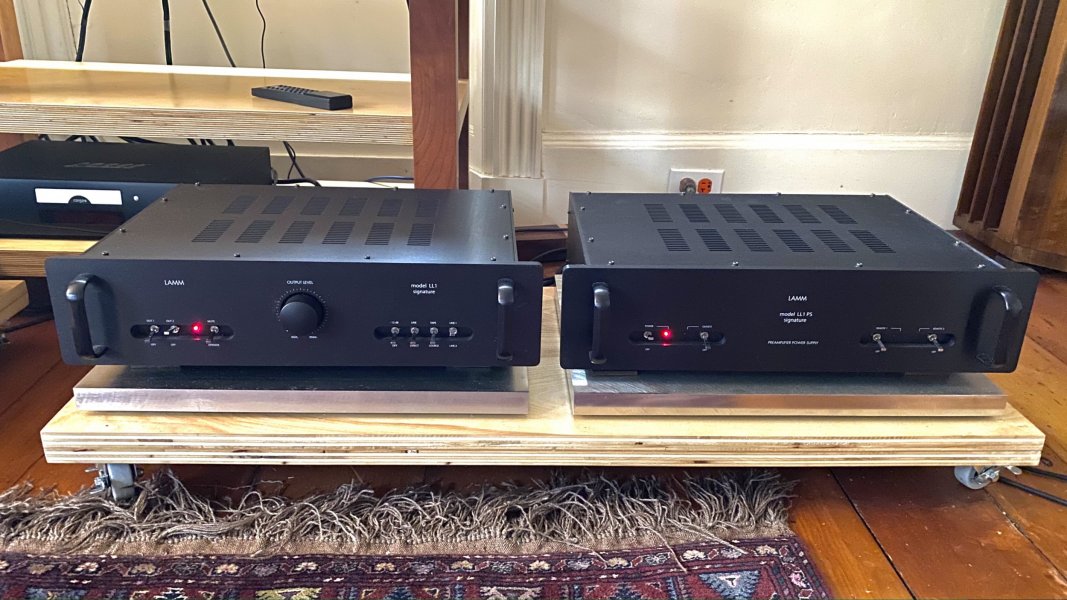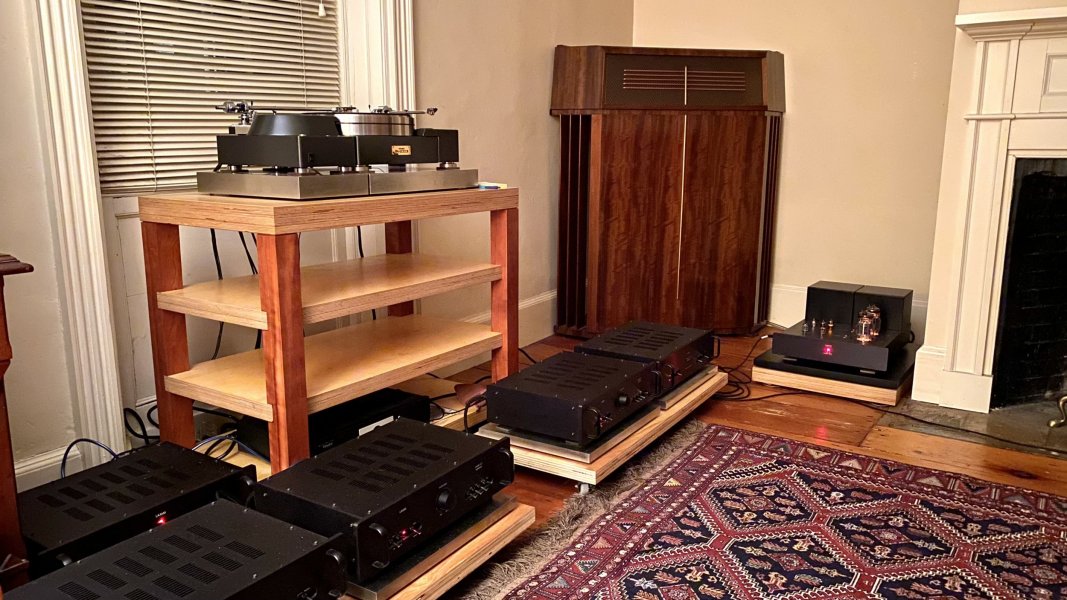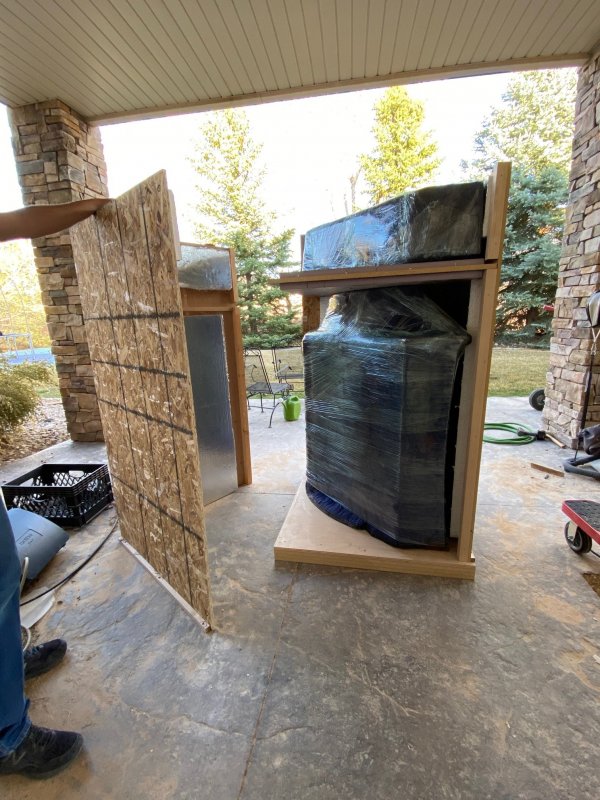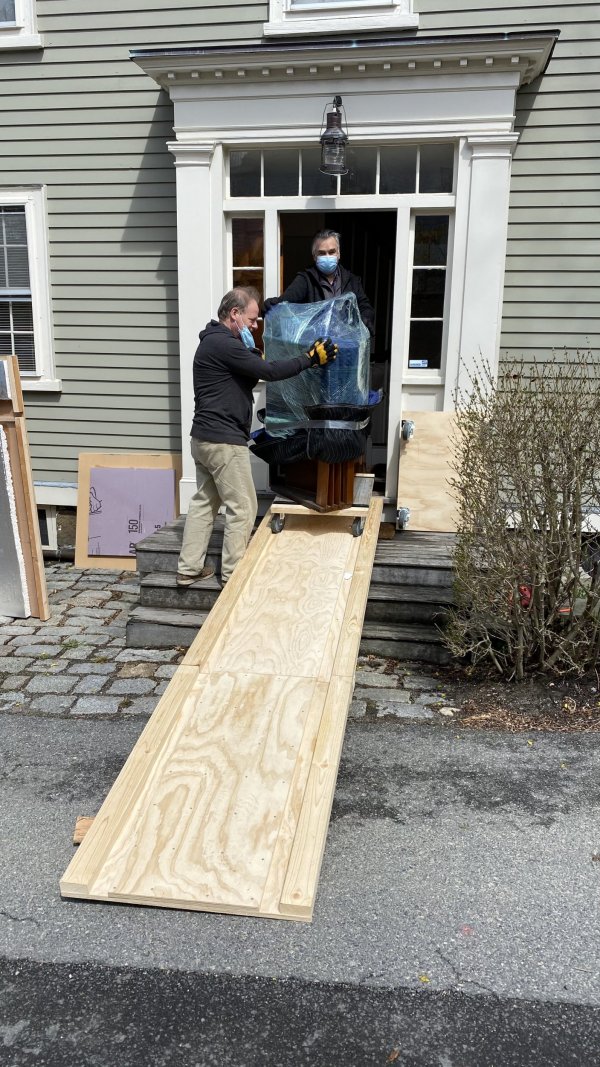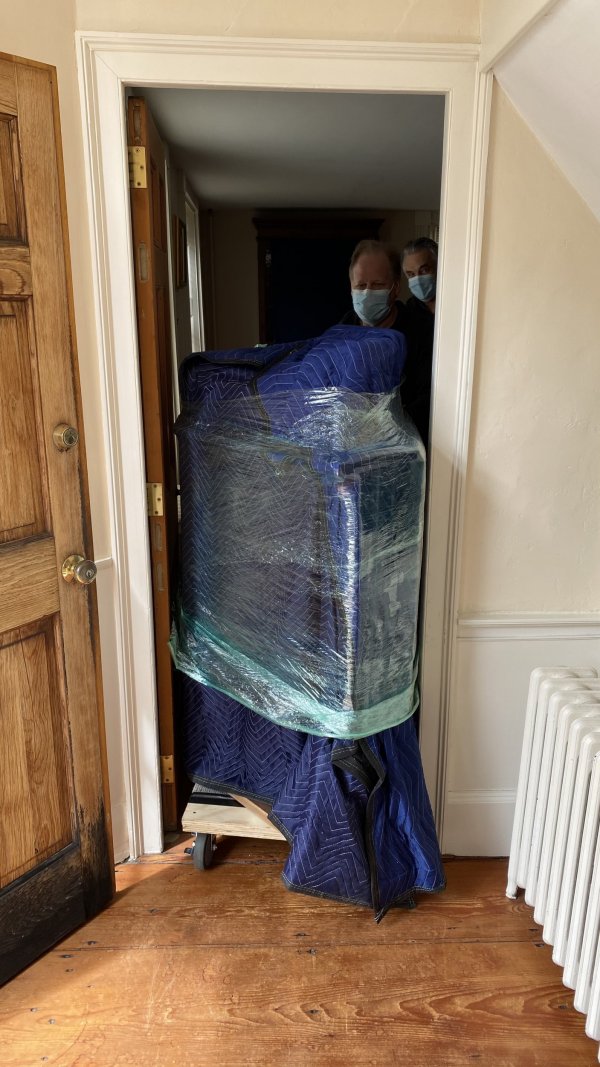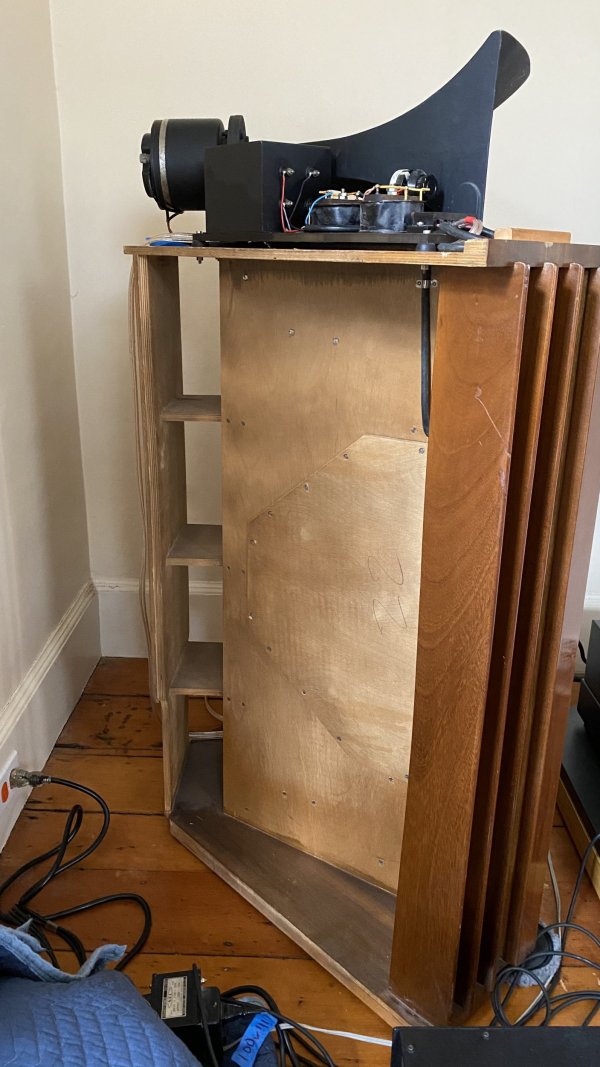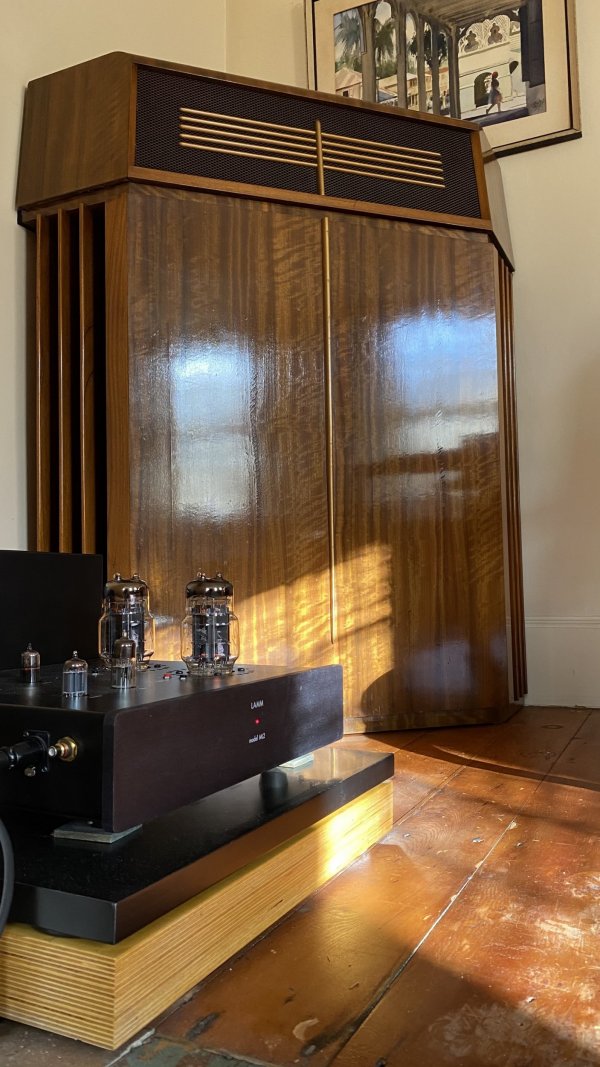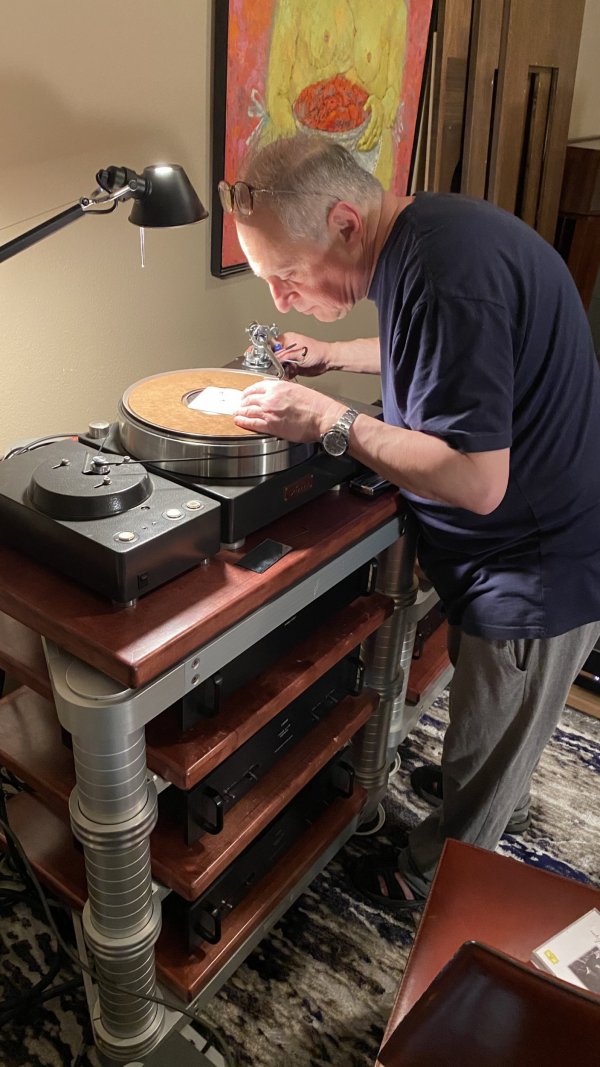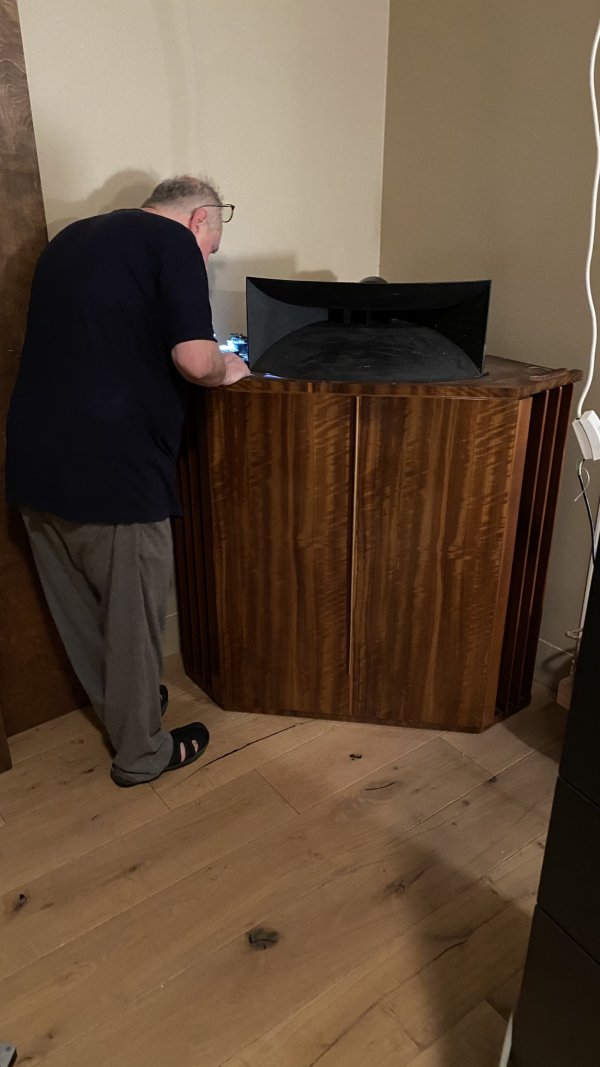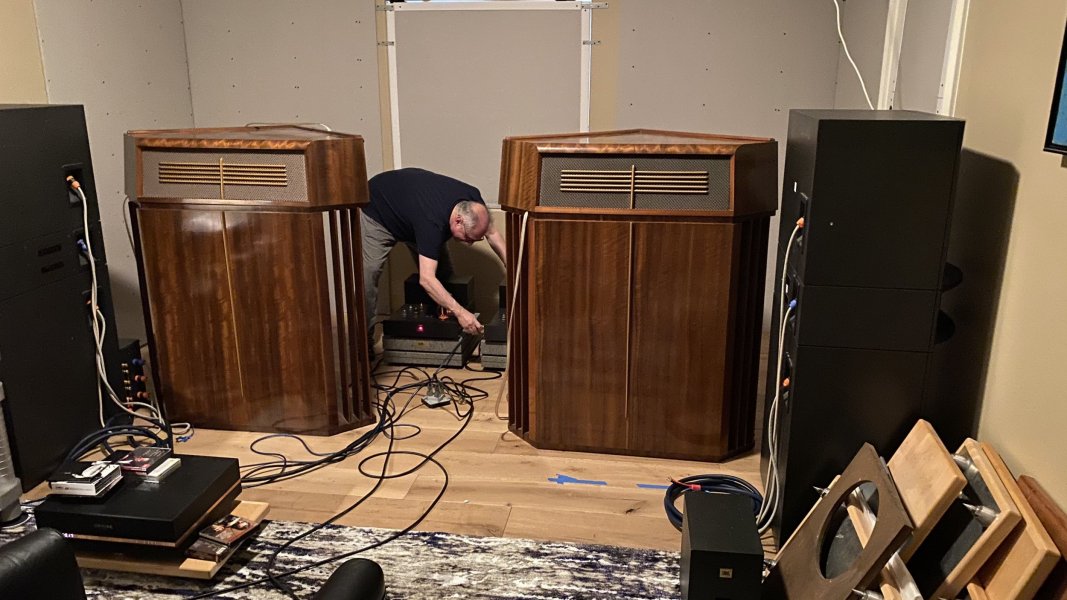What do I hear?
I have now lived with the system for a week. It is still settling in, but I can tell it will be very special. I hear the potential and am very excited about how it will sound when the set up is complete. The wooden speaker cabinets are still acclimating to the new environment and physically settling after the long transport. The wiring, crossovers, speaker cables, and amplifiers all need to be broken in over time. The new rack should eventually improve things further.
David will visit early in the summer to fine tune the set up. Except for the van den Hul cartridges which I have kept (and which David actually sells), this is a complete David Karmeli system: from the NOS tone arms all the way to the power cords. Only my own DIY rack and the one long IC from preamp to amps is not from DDK. Actually the rack, with its many steel plates, is highly influenced by David’s Nothing Rack. I have designed the new rack and hired a cabinet maker to build it. The new rack is designed to accommodate the extra needed space for ventilation of all the new Lamm tube gear, so it will be slightly larger than my existing rack.
The furniture in the room was rearranged in anticipation of getting these corner horns. I can say that the system is really starting to sound excellent. It presents music in a way very similar to what I heard from David’s big Bionor system, just at a smaller scale. It is effortless, open, and extremely dynamic. Tone is absolutely beautiful. Timbre is the most convincing I’ve heard in my room. The bass is perhaps the single area of most improvement. Hollow wooden instruments like drums, acoustic bass, and cello sound convincingly hollow and wooden for the first time in my system. The soundstage on the right recording is huge and fills my entire front wall, side to side, and floor to ceiling.
The presentation is different from my former system. The sound is projected forward from the front corners instead of around the box speaker to form a stage behind and between them. Surprisingly, instruments and voices way back in the stage actually do sound as though they are located behind the front wall.
I have had to make some adjustments to better couple the speakers to the corners and walls. The floor is a bit uneven and the walls are not flat in my 230 year old house, but the materials are solid. I added some dense rubber foam along the top and back edges on both sides of each bass cabinet following a pdf file of the original installation instructions. That modification improved significantly low frequency performance. The Lamm preamp inverts polarity and I incorrectly wired one speaker, so I sorted that out to eliminate what had been a phase issue in the sound identified by my good friend Madfloyd.
The Lamm gear sits on steel plates on temporary wooden platforms with rollers so that I can move everything around when needed. I relocated the turntable’s air pump, transformer, and power supply to the basement to free up rack and floor space and to lower noise. The power supply cable and air tubes come through a hole in the floor behind the rack. I installed two new dedicated 30 amp circuits and outlets on the floor behind the new rack location.
The room has a much more open feeling now with the speakers in the front corners rather than out into the room in front of the fireplace. The living room will gradually become a more inviting space for family and guests. Here are some initial listening impressions:
Beethoven’s Violin Concerto: Large scale classical music now expands to fill the room more completely. The soundstage has expanded to cover the front wall, side to side, floor to ceiling. Separation of instruments, not just in space, but in timbre, is more pronounced. Solo instruments seem more in the same space as the rest of the orchestra. My previous system isolated instruments more with blacker backgrounds and space between instruments, but somehow they seemed less connected to each other. Low frequencies are more defined so there is a better, more solid foundation to the music. Massed strings have weight and swell with beauty while the brass section startles with its energy piercing through. Delicate sounds hang in space more while deep low timpani has taught skins, hollow sound, and more impact and clarity than before. The solo violin is immediate, clear, and full of emotion.
Gustav Holst, Savitri: The stage on which the singers move around is more distinct and present. Singers in the back are further back. The physical movements of the singers are more clearly defined. The voices are more articulate. The supporting strings have a more evident role in the performance. Savitri’s soprano is more piercing, yet smoother and not as fatiguing and sharp. The actor’s emotion is more palpable.
Art Pepper Plus Eleven: The energy of big band sound is more immediate. The individual horns’ signatures are more evident. Dynamics are startling, while the clarinet has beautiful tone with the reed and wood sounds more audible. The bass is full, hollow, and easy to follow. It is not spotlit but clearly part of the rhythm section.
Ray Brown/Almeida, Moonlight Serenade: The guitar has more presence with great balance between the fingers working the strings and the resonant wooden body of the instrument. The tone is incredible. The bass when bowed goes really low but is still clean and articulate. The energy fills the listening room. There is great string texture and the size and scale of the instrument is more evident. When the strings are plucked, they are faster and looser at the same time. The notes are more complete with just the right balance between the initial attack, the sustain, and the decay.
The overall bass performance from jazz drums, to solo cello and massed low strings, to bass trombone and timpani, both large and small scale, together with the now truly startling dynamics of the high efficiency horns, is perhaps the biggest difference between this new system and my former one.

